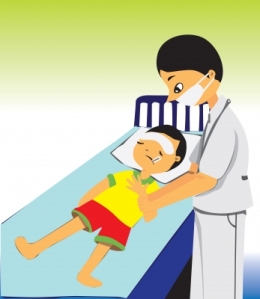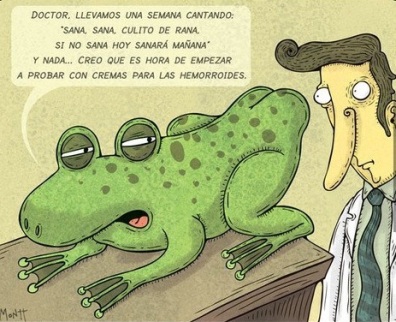It’s been quite a while, I know, but I’d like to get back into the swing of things without too much ado. To start, I want to post some of my columns from The Bogotá Post over this past year. This one combines two of my most popular blog posts, and the definitions are much improved. Which one is your favorite?
I just got back from vacation, we’re all busy watching the Olympics now, and we’re in the languorous dog days of summer. So, these summer doldrums are the perfect time to heed the advice of my chief linguistic takeaway from my recent visit to Colombia’s coast: cógela suave. That is, let’s take it easy in this column.
Therefore, para variar un poco, I hereby present you some of my favorite words in Spanish. Some of them because they’re beautiful, others because they’re fun to say, others because I like how they’re used or their meaning, others because I get a kick out of their translation in certain dictionaries (indicated by quotes), and others because they just have a je ne sais quoi about them. All are words that I’ve gradually come across via conversations, books, and life over the years—no cheating and thumbing through the dictionary or looking up someone else’s list of favorite words. A few are Colombian Spanish or particular to other regions; others may be highly literary or old-fashioned. The definitions are not exhaustive. So, sit back, relax, and enjoy this tantalizing smorgasbord of the Spanish language.
(I know that many native Spanish speakers also read this column, some of whom speak outstanding English, so I tried to include some really rich and colorful English words in the definitions for your linguistic pleasure and learning.)
acuarela (watercolor)
acuatizaje (water landing)
albaricoque (apricot)
almohadilla (ink pad; paw pad; small pillow; pincushion)
amanecer (dawn; to dawn; wake up in the morning; spend the night somewhere; stay up all night)
andariego (full of wanderlust, footloose; wanderer)
apenas (barely, hardly; as soon as)
ay (oh; ow, ouch)
bambalina (stage curtain)
bobalicón (nitwit, twit, dolt)
(a) borbotones (bubbling, gushing; abundantly)
cacharrear (to fiddle with something until you figure it out, tinker)
cachimba (smoking pipe; hookah)
cachivaches (knickknacks, odds and ends; junk)
cantimplora (canteen, flask)
casquisuelto (sexually promiscuous person, womanizer, Don Juan, floozy, man-eater)
chichiguas (pittance, petty amount)
colindar (to adjoin, abut)
cumbamba (chin)
curiosear (to poke around, snoop; to glance at, look around)
decembrino (related to December)
diluir (to dilute)
embebecer (to fascinate)
empiyamado (in one’s pajamas)
ensimismado (lost in thought; absorbed, engrossed; self-absorbed)
escuincle (kid, child)
feligrés (parishioner)
flojera (laziness; weakness)
floripondio (“gaudy decorative flower,” “great flowery thing”; rhetorical flourish)
friolento (cold-natured)
fulano (whatshisname; some random person)
golosina (treat, candy; incentive)
gordinflón (fatty, fatso; chubby, tubby, pudgy)
hediondo (smelly, foul, reeking)
hijueputa (son of a bitch, bastard)
horripilante (hideous; horrifying)
imagínate (just imagine)
inmiscuirse (to interfere, meddle, stick your nose into)
kumis (kumis: kind of yogurt)
lentejuela (sequin)
locuacidad (loquacity, talkativeness)
maracuyá (passion fruit)
memorioso (having a good memory)
mequetrefe (good for nothing, schmuck; busybody)
mermar (to reduce, turn down)
mijo/mija (my son/daughter, “sonny boy”; sweetie, darling)
mismísimo (the very same, itself/herself/himself)
mojigato (strait-laced, goody two-shoes; holier-than-thou, self-righteous; hypocrite, two-faced; prude, prig)
murciélago (bat)
nalgadas (spanking)
natalicio (birthday; commemoration/observance of a famous person’s birthday)
ningunear (to ignore, brush aside; to look down one’s nose at, treat like dirt)
noctámbulo (nocturnal; night owl)
ojalá (let’s hope, hopefully, God willing)
papanatas (sucker, dupe)
papeleo (paperwork; red tape)
parvulario (nursery school, kindergarten)
pecueca (stinky feet smell; bad; brat)
piquiña (itching; envy)
pluviosidad (rainfall)
porquería (junk; dirt; mess; filth, smut; shoddy work)
primíparo (college freshman; first-timer, newbie; primípara: first-time mother)
pues (well; um; then; because, since)
quiubo (what’s up?; hey)
renacuajo (tadpole; nosy)
rosaleda (rose garden, rose bed)
tampoco (neither, nor; come on)
tararear (“to la-la-la”; sing to oneself)
tertulia (get-together, gathering; cultural/literary salon, circle)
tinieblo (secret lover; unofficial or unannounced partner)
tiquismiquis (petty details; bickering, squabbles; fussy, finicky, persnickety; stickler, fusspot)
tulipán (tulip)
vaina (thingamajig, whatchamacallit; headache, drag; pod; sheath, case)
verdulería (produce store; vegetable stand; mayhem, chaos; obscenity)
ya (already; now; enough; right)

Now you have 75 splendid words to season your Spanish with! I hope you enjoyed them and are now thinking about the words that have always struck you as lovely or nifty. What a treat to be able to speak such a beautiful language.







